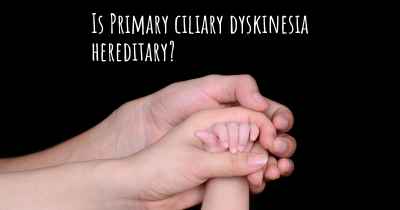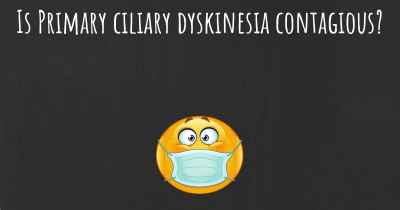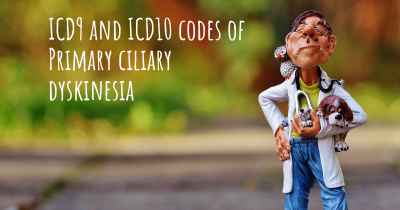Which are the causes of Primary ciliary dyskinesia?
See some of the causes of Primary ciliary dyskinesia according to people who have experience in Primary ciliary dyskinesia

Primary ciliary dyskinesia (PCD) is a rare genetic disorder that affects the structure and function of cilia, which are tiny hair-like structures found on the surface of cells throughout the body. These cilia play a crucial role in various bodily functions, including the movement of mucus, the clearance of debris from the respiratory tract, and the coordination of cell signaling.
PCD is primarily caused by mutations in genes that are responsible for the proper development and function of cilia. These genetic mutations can be inherited from one or both parents, and they result in the abnormal structure or function of cilia.
There are several known genes associated with PCD, including DNAH5, DNAI1, DNAI2, CCDC39, CCDC40, CCDC103, CCDC114, CCDC151, ARMC4, and HEATR2. Mutations in these genes can disrupt the normal movement of cilia, leading to the characteristic symptoms of PCD.
Impaired ciliary movement is the hallmark of PCD. Cilia in individuals with PCD may be immotile (unable to move), dyskinetic (moving in an uncoordinated manner), or completely absent. This impaired ciliary movement affects various organs and systems in the body, resulting in a wide range of symptoms.
Respiratory symptoms are among the most common and significant manifestations of PCD. The impaired movement of cilia in the respiratory tract leads to the accumulation of mucus and debris, making individuals with PCD more susceptible to recurrent respiratory infections, chronic cough, sinusitis, and bronchiectasis. These respiratory symptoms can significantly impact lung function and overall quality of life.
In addition to respiratory symptoms, PCD can also affect other organs and systems, including the ears, sinuses, and reproductive organs. Dysfunction of cilia in the ears can lead to hearing loss and recurrent ear infections. Ciliary dysfunction in the sinuses can cause chronic sinusitis and nasal congestion. In males, PCD can result in infertility due to abnormal sperm motility.
While the genetic mutations responsible for PCD are well-established, the exact mechanisms by which these mutations lead to the development of the disorder are still being studied. It is believed that the abnormal ciliary structure and function disrupt the normal flow of fluids and signaling molecules in various tissues, leading to the observed symptoms.
PCD is typically diagnosed through a combination of clinical evaluation, imaging studies, and specialized tests to assess ciliary function. Genetic testing can also be performed to identify specific mutations associated with PCD.
Treatment for PCD primarily focuses on managing the symptoms and preventing complications. This may involve airway clearance techniques, such as chest physiotherapy and the use of inhaled medications to help clear mucus. Antibiotics may be prescribed to treat respiratory infections, and surgical interventions may be necessary in some cases to address specific complications.
Research into PCD is ongoing, with the aim of better understanding the underlying mechanisms and developing targeted therapies. Advances in genetic testing and gene therapy hold promise for future treatment options.
Posted Mar 6, 2017 by pcdwhat 1100








